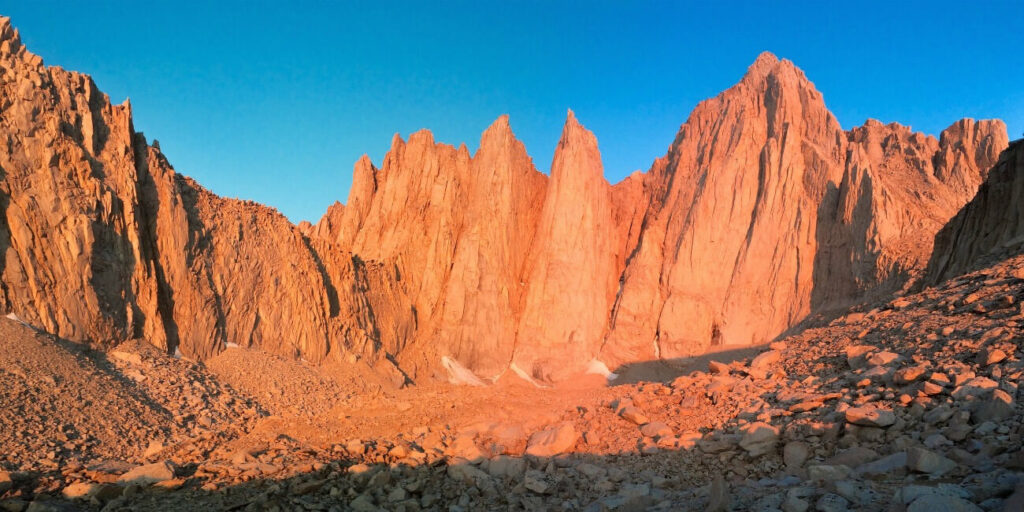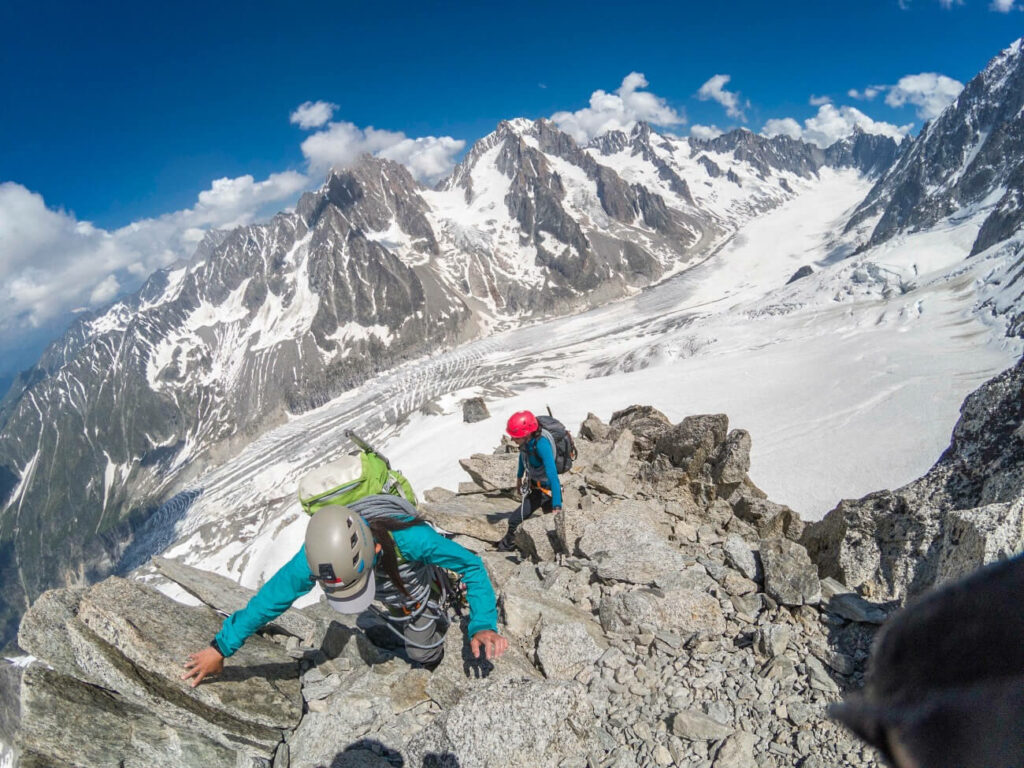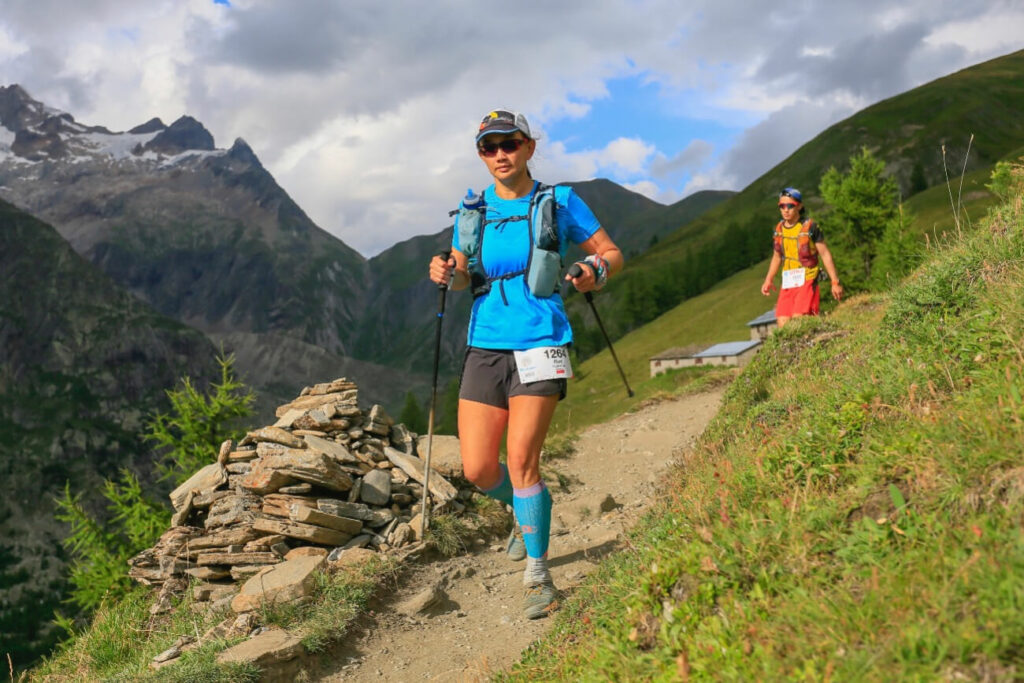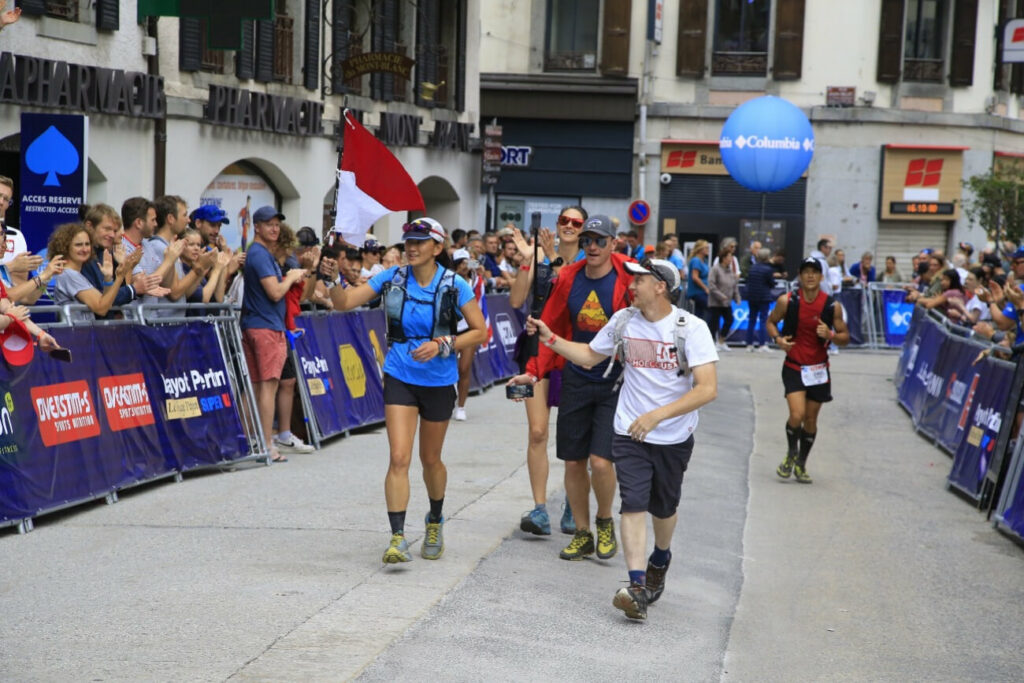Editor’s Note: From the Back of the Pack is a new column by Freetrailer Cathy Beaudoin. The column will feature the incredible stories from runners in the trail and ultra community – runners who, even though they might not be gracing the top of the podium, never cease to inspire us with their grit, grace, and passion for the trail.
Like many trail runners, Rini Sugianto’s heart is in the mountains, but it didn’t start out that way. Born and raised in Lampung, on the island of Sumatra in Indonesia, Rini’s home country is composed of over seventeen thousand islands, and dominated by water. Growing up, she wasn’t drawn to the mountains in her home country, which are either covered by thick, muddy jungle, or composed of volcanos, some active, spewing red hot lava and the pungent smell of sulfur, some dormant, surrounded by savannas layered with gray, silty ash.
It wasn’t until after Rini graduated from The Academy of Arts in San Francisco that her love for outdoor adventures emerged, but her passion for exploration is no surprise. At the age of twenty-two, Rini came to the United States with only a basic grasp of the English language, and didn’t know a soul. Her ability to assimilate into a new place and new culture comes, in part, from her Indonesian roots, a place where it’s common for teenagers to leave their family home to attend high school. Her goal when she came to San Francisco was to become an animator, something she’s done professionally ever since.
Rini began her outdoor adventures as a hiker, not a runner. After a move to the Los Angeles area, she started hiking on the trails around Mammoth, California, then quickly graduated to trekking up Mt. Kilimanjaro. Unlike most trail runners, who tend to be runners first and hikers second, Rini used running to train for her big mountain treks. To prepare for her ascent of Mt. Kilimanjaro, she hiked in the Malibu hills and ran thirty minutes a day on the streets around Playa Vista, in Los Angeles – and to make sure she could handle high altitudes, Rini ascended Mt. Whitney. From the beginning, Rini had the trail runner’s mindset. Her hiking turned into mountaineering, and her goals were to climb higher, more challenging peaks.

After spending six years in the United States, she accepted a job opportunity in New Zealand. While there, she worked on films, including The Hobbit and The Avengers, and continued to hike. In New Zealand, there are a series of long trails called ‘The Great Walks”. One of the features of these trails is a well-developed hut system, which allows hikers to go long distances with light packs. Rini did several of the Great Walks, including the Tongariro Alpine Crossing, a trail in the same area as Mt. Ngauruhoe the mountain people know as Mount Doom from Lord of the Rings. Rini also joined the Wellington Trampers Club, and it was through this affiliation that she discovered mountaineering, and honed her skills for serious, backcountry, high mountain adventures.
After spending four years in New Zealand, Rini returned to the west coast of the United States, roaming between San Francisco, Portland, and Los Angeles. Finding herself bored, she jumped into a local Bay Area trail half marathon, with no training or expectations. She shocked herself by finishing second in that race. Now she jokes, “That performance was the highlight of my racing career.”
Despite her second-place finish, the more significant impact that first trail race had on her was that she made fast friends with the woman who finished first. It was through that friendship that she was introduced to the San Francisco Running Company and the trails in the Marin Headlands. Over the next year, the two women trained for and raced the American River 50 miler.
That’s when Rini fell in love with trail running. Though her passion for the mountains is rooted in mountaineering, where she cherished such tasks as pouring over topographic maps, tracing routes on the page, and obsessively following weather reports, running came with far fewer complications, and consequences. For Rini, the most fundamental goal in mountaineering is to stay alive. When she is climbing, she is hyper-focused on the next foot placement, the next decision, the next piece of equipment needed to traverse the terrain safely. Always in the moment, she’s constantly concerned about properly executing the gameplan. Although the mental strain that comes with mountain climbing is very, very intense, Rini finds the need to stay alive on the mountain has a way of simplifying life. All her energy is directed toward eating, drinking, and sleeping. Effectively, Rini relishes how having to focus on the basics of survival becomes the core of her essence.

When Rini started trail running in earnest, she realized she could still enjoy the outdoors, but do so with less intensity. Running allowed her to relax and zone out on the trails. Also, climbing required a partner and a myriad of equipment. For example, when climbing, Rini often carried things like crampons, an ice ax, a helmet, and depending on how technical the route was, ropes. Rini came to appreciate how running allowed her to venture out on her own, unencumbered by gear. The logistics of trail running were just easier to manage.
Once Rini completed her first trail half marathon, her goals were similar to many runners new to the trail scene. She wanted to challenge herself, to go longer. Her progression was familiar: half marathon, marathon, fifty miles, 100-kilometers, and a hundred miles. The learning curve for how to run longer races was also familiar. She made every mistake possible at the American River 50 – carried away by the momentum of the crowd and the buzz amongst other runners at the start, Rini went out at an unadvisedly fast pace. Then because she was caught up in the excitement, she didn’t eat or drink enough in the early stages of the race.
Then came another rookie mistake. She got lost. Following other runners, they all missed a well-marked turn. Unaware such things were available, Rini didn’t have a map of the course downloaded on her watch. Ultimately, the group ran three miles before they realized their mistake and backtracked accordingly. Still, Rini recalled how getting lost wasn’t her real problem, but that she got mad at herself and sped up to try to make up for lost time. The extra effort trashed her legs and in excruciating pain, she walked the last six miles to the finish line. A tenacious woman, Rini was determined to finish what she started.
As difficult as the American River 50 was, Rini still had the runner’s high afterward and wasn’t discouraged by the experience. She did what most other runners do after a long, grueling effort, she looked for other races to enter and registered for the North Face 50 miler. Unlike at the American River 50, where runners spend a lot of time on back country fire roads, it was at the North Face 50 that Rini linked the beauty of running single track in the hills of Marin County with her experiences in the high mountains. Trail running became an alternative way to have outdoor adventures.
Though Rini discovered her strength was endurance, not speed, the longer she went, the more often she found herself at the back of the pack, flirting with cutoff times. Her sweet spot for distance is racing at the 50-mile or 100-kilometer distances. Still, the allure of the 100-mile challenge drew her in, and she wasn’t afraid to try something daunting. To her, failing is always better than not trying at all.
In 2019, having yet to cover the 100-mile distance, Rini entered the Ultra Trail du Mont Blanc (UTMB) lottery. She had no expectation of getting into the race but as luck would have it her name was drawn. Rini registered for the race, no stranger to the French Alps, having previously climbed Mont Blanc, Arete des Cosmiques, and Aiguille du Tour. In 2017, Rini also ran CCC, the 100-kilometer race held during UTMB week. That year, the weather was cold and rainy, and she worried the same would happen during the 100-mile race.

In a bit of bad luck, Rini showed up at the UTMB start line with an upset stomach. Having climbed and run in the area before without any health issues, she attributed her discomfort at the start line to something she ate in the days before the race. Despite not feeling her best, Rini stood in the back of the pack, behind thousands of other runners, ready to give the race her best effort.
Most people who watch the coverage of UTMB focus on the front runners as they sprint through the streets of Chamonix. Every year, the scene is controlled mayhem – but at the far back of the pack, it is quite the opposite. Rini waited, and then very, very slowly moved forward. She finally crossed the start line thirty minutes after the race had started, when the lead runners were already miles ahead.
When asked what she was thinking about at the start of the race, Rini said she wasn’t thinking about much. She knew she was about to embark on a long journey, one where she wouldn’t see her crew for the first six or seven hours of the race. When she stood at the start line, she had doubts about her ability to meet the challenge in front of her, especially since she wasn’t feeling well. Aware meeting the cutoff times was no guarantee, her primary goal was to not get caught by the sweepers.
One advantage to running at the back of the pack, especially at UTMB, is that a large percentage of runners who start the race fight to meet the cutoff times. In fact, Rini said there were always twenty to thirty runners around her, even at the finish line. Throughout the race, the aid stations were bustling with activity, including volunteers, runners, and depending on the aid station, other crew members. Although there was an abundance of external support, Rini struggled to meet the cutoff times for over half the race.
“It was both nerve-wracking and mentally exhausting,” Rini said.
In other races, as long as she had an hour cushion to meet a cutoff time, she knew she’d make it -but at UTMB, her cushion was razor thin. She crossed the finish line around the forty-six-hour mark, just thirty minutes before the final cutoff time.

Getting to the finish was not a given. In the last eight-mile stretch, Rini’s husband, her crew for the race, implored her to run as hard as possible to the finish. Without his awareness of the time constraint, Rini doesn’t think she would’ve made it. But she also noted, as difficult as the race was, fighting nausea, muscle fatigue, and lack of sleep from being on the course for almost two days, stopping was never an option. This was a mindset she learned climbing mountains. In the remote wilderness, she learned early on to keep putting one foot in front of the other, no matter how bad she felt. In the wilderness, it’s the only way out.
When asked what people should know about back-of-the-packers, Rini noted runners at the back of the pack experience a very different race than runners at the front. For example, for a morning start, faster runners see the course in the daytime, but back-of-the-packers might have to traverse as much as half the course in darkness. From a practical standpoint, back-of-the-packers are on their feet longer, so there are usually more issues to deal with – blisters, swollen feet, longer periods of sleep deprivation, having to eat more because of the longer time on the trail, and carrying a heavier pack because of the longer times between aid stations. In some races, runners at the back also experience aid stations that have either shut down, or run out of supplies.
Since her experience at UTMB, Rini has completed a second 100-mile race, the Mountain Lakes 100 in Oregon. She also raced the Waldo 100-kilometer, where she got a Western States lottery qualifying time by mere minutes. After accumulating four tickets in the Western States lottery, Rini tore her ACL. This means she doesn’t have a current Western States qualifier, and isn’t eligible for this year’s lottery. And because of the same injury, Rini has a deferral for the 2023 Leadville 100, but is concerned she won’t make the aggressive cutoff times at that race. Still, true to her nature, she’s reluctant to back away from the challenge.
When asked about other goals for the upcoming year, Rini admitted she wants to do more adventure running, where there is less pressure. Her interests include fastpacking the High Sierra Trail and the Tahoe Rim Trail, and running anywhere from ten to twenty miles to the base of a mountain, climbing it, and running back. Her long-distance running ability has opened up a new range of adventures deep in the wilderness. Regardless of what Rini decides to do next, one thing is for sure, she’ll be running in the mountains.
